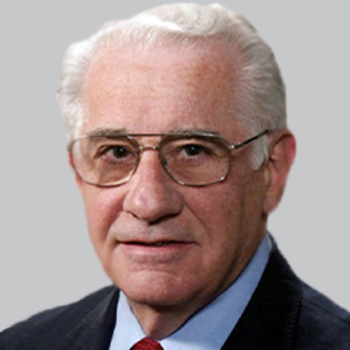
The use of single-pulse transcranial magnetic stimulation, while already FDA-approved for acute and preventive migraine treatment, has shown that it can be effective in reducing the need for acute headache medications in patients with migraine.

Matt Hoffman, Editorial Director for NeurologyLive, has covered medical news for MJH Life Sciences, NeurologyLive’s parent company, since 2017. He executive produces the NeurologyLive Mind Moments® podcast, and hosted the Medical World News show Deep Dive. Follow him on Twitter @byMattHoffman or email him at [email protected]

The use of single-pulse transcranial magnetic stimulation, while already FDA-approved for acute and preventive migraine treatment, has shown that it can be effective in reducing the need for acute headache medications in patients with migraine.

Zogenix has announced that its Study 1601 of fenfluramine (Fintepla), also known as ZX008, in the treatment of seizures associated with Lennox-Gastaut syndrome has completed enrollment and is on schedule to report top-line data in Q1 2020.

The University of Alabama at Birmingham neuromodulation epilepsy clinic has treated 43 patients with drug-resistant epilepsy, reducing seizures by >60% for a number of patients with both vagus nerve stimulation and responsive neurostimulation techniques.

The PKG wearable was able to more effectively and objectively assess motor fluctuations in patients with Parkinson disease than standard patient-reported motor diaries.

Though no details have been reported, Janssen Pharmaceuticals announced that its S1P modulator ponesimod has met its primary and key secondary end points in the OPTIMUM study, in which it was compared to teriflunomide in patients with relapsing MS.

The investigators noted that these data provide robust and promising evidence that eptinezumab is associated with a rapid preventive effect in chronic migraine that is sustained for 3 months after a single infusion.

Despite previous case series suggesting that undergoing surgery may increase the risk of multiple sclerosis relapse, retrospective analysis of more than 600 surgeries undergone by patients with progressive and relapsing MS now proposes that the risk of relapse is not high in the postoperative period.

The PRIAMO study data showed that men with Parkinson disease who had been sexually active in the past 12 months were more likely to have lower motor disability, better quality of life, and lower depression scores. No similar associations were observed for women.

The phase 2b trial of the repository corticotropin injection (Acthar Gel) in amyotrophic lateral sclerosis was halted due to data and safety board concerns of the potential risk of pneumonia.

The Accordion Pill C/L did show success in treating the symptoms of Parkinson, despite the lack of significant differences. Although it also failed to achieve superiority in secondary end points.

The associate director of the Institute for Clinical & Translational Science at the University of California, Irvine, spoke about the findings of the study and how it can inform the use of telemedicine.

The monoclonal antibody against CGRP reduced the frequency of episodic cluster headache attacks significantly more than placebo, though the Eli Lilly therapy failed to separate from placebo in the disease’s chronic presentation.

The director of the Headache Center of Southern California shared insight into the success of ubrogepant in patients who failed on triptans, and how the future of migraine treatment may need to focus on combination approaches.

The PD GENEration program will offer no-cost genetic testing for Parkinson-related genes and genetic counseling, using the data for future research into the development of personalized medicine and interventions in Parkinson disease.

Lead author Elizabeth K. Seng, PhD, shared insight into the findings of an exploration of the use of mindfulness-based cognitive therapy to reduce the impact of migraine on patients, as measured by Migraine Disability Assessment, as well as Headache Disability Inventory scores.

Real-world data of erenumab indicates that a large number of patients are the chronic migraine population, and there is a high rate of persistence to the anti-CGRP therapy. The most commonly prescribed dose of erenumab was 70 mg.

Patients with migraine who reported both moderate and severe pain intensity during headache attacks experienced high rates of relief and freedom from pain and their most bothersome symptom when treated with 3-mg sumatriptan injection, DFN-11.

Despite ongoing discussion regarding the 6-item Headache Impact Test’s relevance in the migraine population—for which it was not specifically developed—the test has been shown to be a useful tool in the assessment of patients with migraine.

Survey data revealed 36% of patients with migraine with prescription medications were using opioids in acute management, though data also reinforced that receiving a diagnosis of migraine or chronic migraine was associated with a significantly decreased likelihood of opioid use.

As measured with the Migraine Disability Assessment, the proportion of patients with episodic migraine experiencing severe disability was reduced significantly, and Headache Disability Inventory scores were significantly reduced.

Almost 20% of rimegepant-treated patients experienced pain freedom within 2 hours of receiving a 75-mg dose compared to the placebo group, in which 12% were pain-free at 2 hours.

Both the frequency of headache days and the intake of acute medication were decreased with the use of a daily, single 20-minute eTNS session over the course of 3 months in an open-label, monocenter, prospective pilot trial.

30 days post-treatment, the mean Fugl-Meyer score change was a significant 8.36 points and 7.86 points for the in-clinic and telerehabilitation groups, respectively.

In order to improve patient care in epilepsy, physicians need a more consistent and cohesive method of recording patient seizure activity. As wearables get more sensitive and specific, using them in tandem with electronic seizure diaries may help address the challenge.

The MS neurologist at Cleveland Clinic’s Lou Ruvo Center for Brain Health discussed the impact that propensity score has had on real-world data analysis, the use of additional outcome measures in trials, and the increasing understanding of progressive disease.

A new analysis of NASR data suggests that the risk for sudden unexpected death in epilepsy exists across a broad range of epilepsies, including those patients who are seizure-free, have never had tonic-clonic seizures, or those diagnosed with a benign epilepsy syndrome.

The clinical assistant professor of neurology and neurosurgery at the University of Texas discussed the need to identify men who may be at risk for myasthenia gravis despite a lack of willingness to see their physician.

The entire 25-patient cohort from the NURTURE study was able to sit without support, while 88% were able to walk independently, according to new 45-month data in presymptomatic patients with spinal muscular atrophy.

PF-06939926 is a recombinant adenoassociated virus serotype 9 (AAV9) capsid carrying mini-dystrophin, a shortened version of the human dystrophin gene, under the control of a muscle-specific promoter.

After receiving a refusal to file letter and undergoing a Type A meeting with the FDA, Zogenix has announced that it plans to resubmit an NDA for fenfluramine (Fintepla) for the treatment of seizures associated with Dravet syndrome in Q3 of 2019.